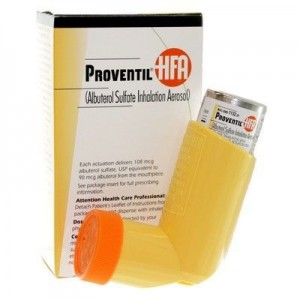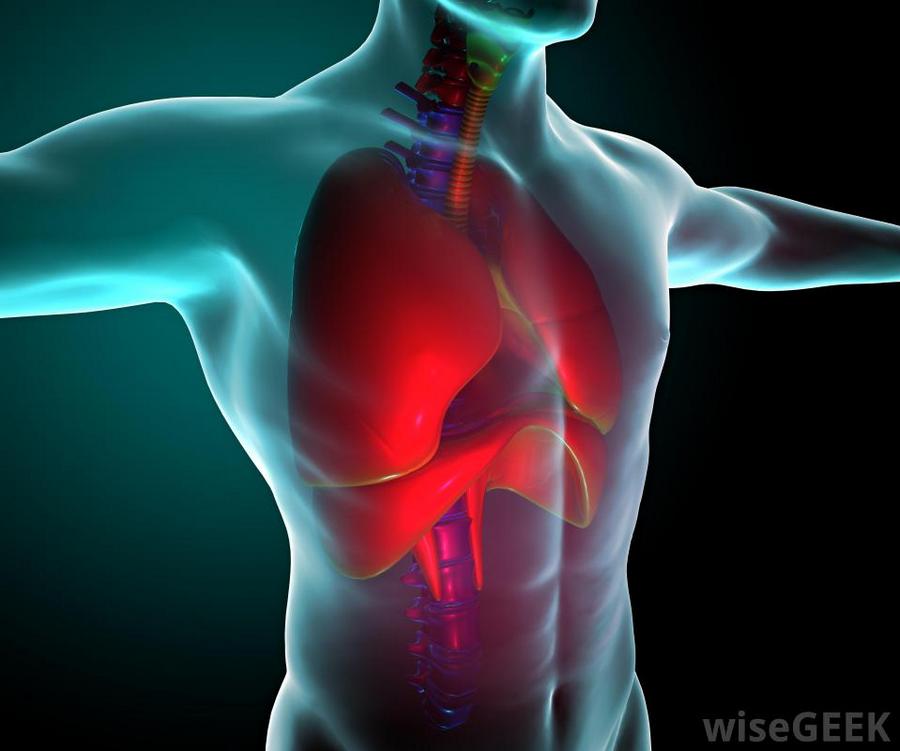
BRAND NAME: Proventil
GENERIC NAME: Albuterol Inhalation
PREPARATIONS: Inhalers: 100 mcg
| Product | Price | Per pill | Order |
| Proventil Inhaler 1 inhaler x 100 mcg | $38.99 | $38.99 | Buy Now |
| Proventil Inhaler 3 inhalers x 100 mcg | $92.99 | $30.92 | Buy Now |
| Proventil Inhaler 6 inhalers x 100 mcg | $174.99 | $29.24 | Buy Now |
Composition
One dose of metered aerosol for inhalation include 124 mg of salbutamol sulphate, corresponding to 100 mg of pure material. As auxiliary substances ethanol and hydrofluoroalkane are used.
Pharmaceutical Form
Proventil has the following pharmaceutical forms:
- metered aerosol for inhalation of 100 mg/dose (released in aluminum container under pressure, each inhaler contains 200 doses; when sprayed onto a glass surface leaves white spot);
- metered powder for inhalation of 200 or 400 mcg/dose;
- film coated pills of 2 and 4 mg.
Produced under other brand names salbutamol drugs can also be released as:
- retard pills;
- solution for inhalation;
- solution for injections;
- syrup;
- concentrate for infusion solution;
- capsules, filled with powder for inhalation.
Pharmacological Effect
Proventil (Salbutamol) is a bronchodilatory agent, selective β2-agonist (selective β2-adrenergic receptors antagonist). Pharmacological action of the drug: bronchodilator and tocolytic.
Pharmacodynamics and Pharmacokinetics
 When used in therapeutic doses it has a pronounced bronchodilator effect, prevents and relieves bronchspasm-inducing syndrome, increases vital lung capacity, inhibits histamine release into extracellular space, chemotactic factors, slowly reacting substance and a number of other highly active substances.
When used in therapeutic doses it has a pronounced bronchodilator effect, prevents and relieves bronchspasm-inducing syndrome, increases vital lung capacity, inhibits histamine release into extracellular space, chemotactic factors, slowly reacting substance and a number of other highly active substances.
On salbutamol background slight positive ino- and chronotropic effects on heart muscle are observed.
The drug expands heart coronary arteries, suppresses early and late bronchial reactivity, reduces respiratory tract resistance, as well as myometrium tone and contractile activity, improves bronchial ciliated epithelium function, stimulates sputum discharge and mucus production.
This means has almost no effect on β1-adrenergic receptors, does not cause reduction in blood pressure and, in comparison with other drugs having similar mechanism of action, has much less effect on heart.
Proventil also has metabolic effect: reduces potassium concentration in blood plasma, affects process of glycogen breakdown to glucose (glycogenolysis) and insulin secretion.
For some patients (especially patients with bronchial asthma) it is able to provide hyperglycemic and lipolytic effects, thereby increasing risk of lactacidemic coma.
After administration of inhaled drug forms, effect begins to develop after 5 minutes and reaches its maximum in 30 – 90 minutes (approximately 75% of maximal effect is reached within 5 minutes).
From 10 to 20% of the dose, received by patient, enters respiratory tract, the remaining 80 – 90% remain in the device and deposited in oropharynx and then swallowed. Remaining in the respiratory tract material is partially absorbed in lungs and, without biotransforming therein, gets into bloodstream. A part of the drug in digestive tract is absorbed and extensively metabolised during first pass through liver, forming form phenolic sulphate.
Both conjugate and unmodified substance are excreted primarily with urine.
Indications
Indications for Proventil use are:
- asthma bronchospasm in all forms (the means can be used for bronchospastic syndrome relief and prevention);
- pulmonary emphysema;
- chronic bronchitis;
- asthmatic bronchitis;
- uncomplicated premature labor.
Proventil is also used in pediatrics to treat bronchial obstruction.
Contraindications
- hypersensitivity to drug components;
- cardiac arrhythmia (for example, polymorphic ventricular premature beats or paroxysmal tachycardia);
- cardiac abnormalities;
- myocarditis;
- tachyarrhythmia;
- aortic stenosis;
- ischemic heart disease;
- thyrotoxicosis;
- decompensated diabetes;
- epileptic seizures;
- glaucoma;
- pyloroduodenal narrowing;
- hepatic or renal function insufficiency;
- pregnancy.
The drug is not indicated in combination with non-selective β-blockers, as well as for treating children up to 2 years old.
Caution must be taken at:
- hyperthyroidism;
- pheochromocytoma;
- severe chronic cardiac insufficiency;
- arterial hypertension.
Intravenously Proventil is contraindicated at:
- intrauterine fetal death;
- maternal passages infections;
- hemorrhages associated with placental presentation;
- premature placental abruption;
- threatening miscarriage in 1 or 2 trimesters of pregnancy;
- late toxicosis (toxicosis during 3 trimester of pregnancy).
Pregnancy and Lactation Period
Proventil is contraindicated during pregnancy. During lactation period the drug can be appointed if expected benefit to the mother outweighs possible risks to the child. This is due to its ability to penetrate into breast milk.
Side Effects
Proventil, released in aerosol form, when administered in therapeutic doses does not cause side effects.
If you exceed one-time or daily dose of salbutamol, as well as at patients with hypersensitivity to β2-adrenergic receptors stimulants, the most significant side effects are tremors of fingers or hands, inner trembling, increased tension.
In case of significant excess of therapeutic doses or hypersensitivity, patient may experience transient peripheral blood vessels expansion, dizziness, headaches, moderately severe tachycardia, nausea, muscle cramps, vomiting.
Very rare there angioneurotic edema, manifesting as skin rash, allergic reactions, urticaria fever, collapse, hypotension, bronchospasm.
Instructions for Use
At inhalation administration dosage depends on prescribed pharmaceutical form. In accordance with instructions for use, Proventil Inhaler is indicated for bronchospastic syndrome or asthma attack relief. Adults are usually recommended 0,1 – 0,2 mg, children – 0,1 mg.
Frequency of use depends on particular clinical situation and indications.
In order to prevent exercise-induced asthma attacks, before exercise children should administer dosage of 0,1 mg, for – 0,2 mg. Maximal daily dose – 0,8 mg (equivalent to 8 inhalations).
Instructions for Proventil Inhaler Use
- Before using inhaler, you should check if it is broken. This procedure is also recommended in case when patient for some time did not use inhaler.
- It is necessary to remove protective cap and make sure that exit tube is not clogged with dust or dirt.
- Hold container in upright position, place your thumb under the bottom, and pointer – on the upper part, then it is necessary several times to intensively shake container up and down.
- After a deep breath (inhaling is recommended without tension), you should throw back your head and hold inhaler exit tube tight with lips.
- Holding the tube with lips, you should make a slow deep breath, at the same time pressing pointer (in the first third of inhale) to inhaler valve and releasing one dose of medication.
- After removing the tube from your mouth, it is necessary for 10 seconds (or as much as this is possible without pressure) to hold breath, then exhale slowly through your nose.
- If you want to take more than one inhalation, after the first one wait for about a minute and then repeat all the steps above (starting from the second). Upon procedure completion spray should be closed with the cap.
- At the time of drug dosage release there should not be any rush, for maximal effect it is necessary to inhale air as slowly as possible. Before procedure a little practice before mirror is recommended.
- If during inhalation from the top of inhaler or from mouth corners fume appears, inhalation should be started again from the second paragraph.
How to Clean Inhaler
- Inhaler should be cleaned at least once a week. Container is removed from the plastic case, after which the case and the cap are washed with warm water (not hot!).
- Washed device should be carefully dried without using heating devices. Thereafter, container is again placed into case and the cap is closed.
- Do not dip metal container into water.
Overdose
Proventil overdose symptoms are:
- peripheral vessels expansion;
- nausea and vomiting;
- hallucinations;
- increased irritability;
- ventricular flutter;
- tachycardia;
- low blood pressure;
- acidosis;
- muscle tremor;
- hypokalemia;
- hypoxemia;
- headaches;
- malaise;
- hypoglycemia, followed by hyperglycemia.
Treatment involves drug withdrawal, using cardioselective β-blockers and symptomatic therapy.
If there is suspicion of salbutamol overdose, it is necessary to keep serum potassium concentration level under constant control.
Drug Interactions
 When Proventil is used in combination with non-cardioselective β-blockers, there is possible mutual therapeutic effects inhibition. In combination with theophylline the drug may increase arrhythmia and tachycardia risks (particularly supraventricular extrasystole).
When Proventil is used in combination with non-cardioselective β-blockers, there is possible mutual therapeutic effects inhibition. In combination with theophylline the drug may increase arrhythmia and tachycardia risks (particularly supraventricular extrasystole).
In combination with diuretics, glucocorticosteroid drugs and xanthine derivatives, risk of hypokalemia increases.
Special Instructions
Increasing dosage or multiplicity of applications should be carried out under medical supervision. Reduction of intervals is allowed only in extreme cases, besides it must be strictly justified.
On the background of drug application there is a risk of hypokalemia, so patients with severe asthma are recommended to constantly monitor serum potassium concentration indicators. Risk of hypokalemia is increased at hypoxia.
World Anti-Doping Agency (WADA) prohibits Proventil (Salbutamol) in sport, because this drug has ability to artificially enhance endurance and physical activity during sports competitions.
Pills are usually recommended when it is impossible to use inhalers (e. g., infants), as this pharmaceutical form excess dosage may provoke cardiokinetic effect.
Reviews about Proventil
Proventil is described as a powerful and effective means. For many people who suffer from asthma, these means is a real panacea as it rapidly improves patient’s condition even at severe bronchospasm.

